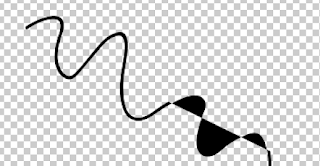Notes on piano scales
Don't learn a single-octave scale fingering and a different multi-octave fingering. Learn a fingering which repeats elegantly across as many octaves as necessary. As much as practical, the octave naturally starts and ends on the same finger so that there is no difference between repeating octaves vs changing directions at the top/bottom of your keyboard. A few fingerings do not start and end on the same finger; in that case the mental model is the fingering you use to repeat the octave, but when changing direction you can 'shortcut' and skip an unnecessary final finger crossing, using e.g. pinky instead (as in a single-octave fingering).
Practice scales up and down as many octaves as your keyboard allows, so you get used to the octave crossings and build muscle memory with your hands at all positions on the instrument. The brain can get tripped up when your hand crosses your center line to the opposite side of your body, practicing the full length of the keyboard helps you overcome that problem.
Practicing around the cycle of fifths/fourths reveals some interesting patterns which might help you remember the fingerings as you build muscle memory. But once you have muscle memory, you should also practice them in chromatic order (C, C#, D, etc) so that your memory isn't overfit to those interesting patterns.
Practice to a metronome, excruciatingly slow while you are first learning, and then at a comfortably slow pace for regular practice.
While learning, play left and right hands separately to build muscle memory, then play both hands together but at half tempo or even slower - your brain has to work at least twice as hard to coordinate both hands at the same time.
When building speed, practice the same scale over and over: L hand, R hand, both hands at half tempo, then bump the tempo up 5 or 10 BPM.
When practicing scales with both hands, it often makes sense to pay attention to the left hand on the way up, because placing the wrong finger after a thumb crossing is a common mistake. On the way down, it is the right hand which needs to choose the correct finger after a thumb crossing. But once you have learned your scales, practice with your eyes on the opposite hands, or elsewhere, or closed, so that your skill does not rely on where your eyes are pointing.
Recommended fingerings
Standard finger numbering: 1 is thumb and 5 is pinky for both hands.
Fingers in light grey are only used on the highest/lowest octave. Bold are the ones you use every time you repeat a multi-octave scale. For instance, C left hand played across 3 octaves would expand to 5432132 1432132 1432132 1
- C
- L: 54321321
- R: 12312345
- F
- L: 54321321
- R: 12341234
- Bb
- L: 32143213
- R: 41231234
- L hand starts on 3 and after a crossing lands on 4, so that the thumb lands at the right place. This exact fingering is used for the next 3 octaves.
- R hand placed so black keys get 23 and 234 with thumbs on C and F. You'll know which finger to cross to when descending by paying attention to whether it is the 2- or 3-block of black keys: use finger 3 to hit Eb and 4 to hit Bb. This strategy is used for the next n octaves, although the exact fingering depends on whether the root is in the 2-block or 3-block of black keys.
- Eb
- L: 32143213 (same as Bb)
- R: 31234123 (similar to Bb)
- L hand ascending, use finger 3 to hit the root and 4 on the next crossing.
- R hand descending, use finger 3 to hit Eb and 4 to hit Bb.
- Ab
- L: 32143213 (same as Bb)
- R: 34123123 (similar to Bb)
- L hand ascending, use finger 3 to hit the root and 4 on the next crossing.
- R hand descending, use finger 3 to hit Eb and 4 to hit Bb.
- Db
- L: 32143213 (same as Bb)
- R: 23123412 (similar to Bb)
- L hand ascending, use finger 3 to hit the root and 4 on the next crossing.
- R hand descending, use finger 3 to hit Eb and 4 to hit Bb.
- First of 3 scales which use all the black keys, with thumbs on which keys. For both hands, black keys are aligned to the strongest fingers, and aligned by 2-block and 3-block. White keys are C and F (the higher of the two side-by-side white keys). Thumbs hit at the same time for both hands.
- F#
- L: 43213214
- R: 23412312
- Using all black keys with strongest fingers of both hands aligned to the 2- and 3-block. Thumbs on the white keys adjacent to the 3-block (C has been flattened to B as of this scale). Thumbs hit at the same time for both hands.
- B
- L: 43214321
- R: 12312341
- Using all black keys with strongest fingers of both hands aligned to the 2- and 3-block. Thumbs on the lower of the 2 white keys (F has been flattened to E as of this scale). Thumbs hit at the same time for both hands.
- E
- 54321321
- 12312345
- All the rest of the scales use the same fingering as C. The crossings make ergonomic sense for the right hand. The left hand sometimes feels a little random for which are white keys and which are black keys. It might help to think of the key signature, and how each scale has one fewer sharp as you approach C.
- A
- Same as E
- D
- Same as E
- G
- Same as E
- C
- Same as E


